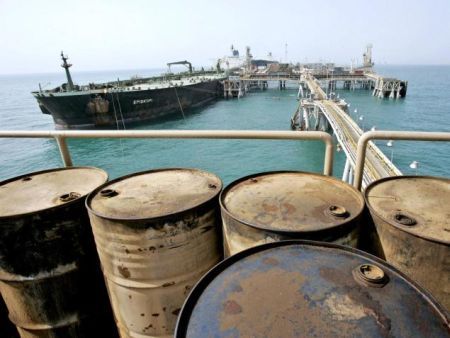
Iran set its official selling prices (OSP) for June-loading Iran Light crude to Asia at $1.91 a barrel premium to Oman/Dubai, down 20 cents from the month before, trade sources said on Monday.
The table below shows June crude prices to Asia, as differentials to the Oman/Dubai average.
Prices for Soroush and Norouz are quoted as differentials to Iranian Heavy. All prices are in U.S. dollars.
Source: Reuters (Reporting by Osamu Tsukimori and Florence Tan; Editing by Anupama Dwivedi)
Libya's Agoco ready to boost Sarir, Mesla oil output, currently holding back
Libya's state-owned Agoco is able to boost production from its major Sarir and Mesla fields -- currently producing some 143,000 b/d -- but is deliberately limiting production so as not to exceed storage capacity at the recently re-opened ports of Marsa al-Hariga and Zueitina.
Agoco said over the weekend that it has been sending around 150,000 b/d of crude to the export terminals since its parent company NOC lifted force majeure from the ports in April.
Agoco operates the fields of Sarir, Mesla, Hamadi and Nafoora, which have a combined production capacity of around 425,000 b/d.
Production at the Sarir field is currently averaging around 80,000 b/d, while output at the Mesla field is now some 63,000 b/d, Agoco said.
"The fields are ready to return to full capacity, but the company is delaying the return of maximum output so as not to pile up quantities of crude oil at the ports' storage facilities," Agoco chairman Mohammed bin Shatwan said in a statement.
Shatwan said output from Sarir and Mesla could return to full capacity "within two weeks" as exports from Marsa al-Hariga ramp up.
Shatwan said there was, though, an absence of a "clear vision" from the government on the export of Libyan crude oil to world markets.
ES SIDER, RAS LANUF
Two other eastern Libyan ports -- Es Sider and Ras Lanuf -- remain closed as the government and protesters continue talks over implementing an agreement to restart the terminals.
Shatwan said the restart of production from the fields of Hamadi and Nafoora would depend on Es Sider and Ras Lanuf resuming exports.
"Everyone is willing to return to maximum production capacity at all of our fields," he said.
Libya's oil sector remains in a state of chaos with production averaging just 250,000 b/d, way below the 1.5-1.6 million b/d Libya was producing before the current spate of unrest began in May 2013.
The offshore Bouri and El-Jurf fields have continued producing.
There had been hope that with the eastern ports of Es Sider and Ras Lanuf set to reopen it could trigger a sustained recovery too for production in the east of the country.
Meanwhile, the country's major oil fields in the west of the country also remain closed.
At the start of the month hopes were high of an imminent restart of oil output at the major 340,000 b/d capacity Sharara field, but talks with protesters have seemingly not led to a breakthrough.
The Elephant and Wafa fields also remain shut in.
Source: Platts
We use cookies to improve your experience. By continuing to use our site, you accept our Cookies, Privacy Policy,Terms and Conditions. Close X